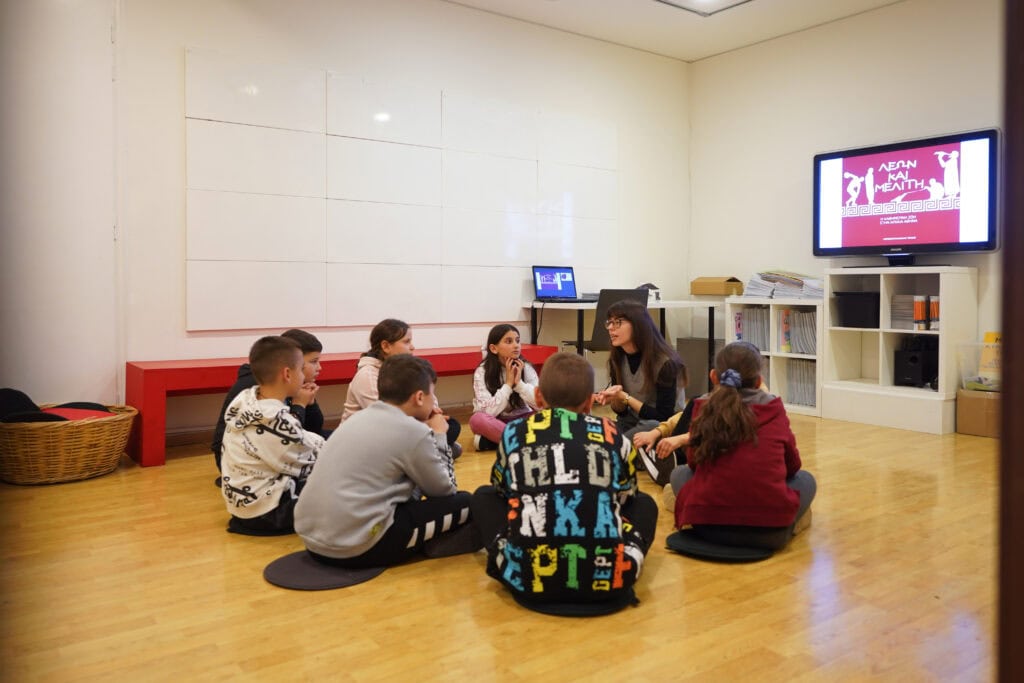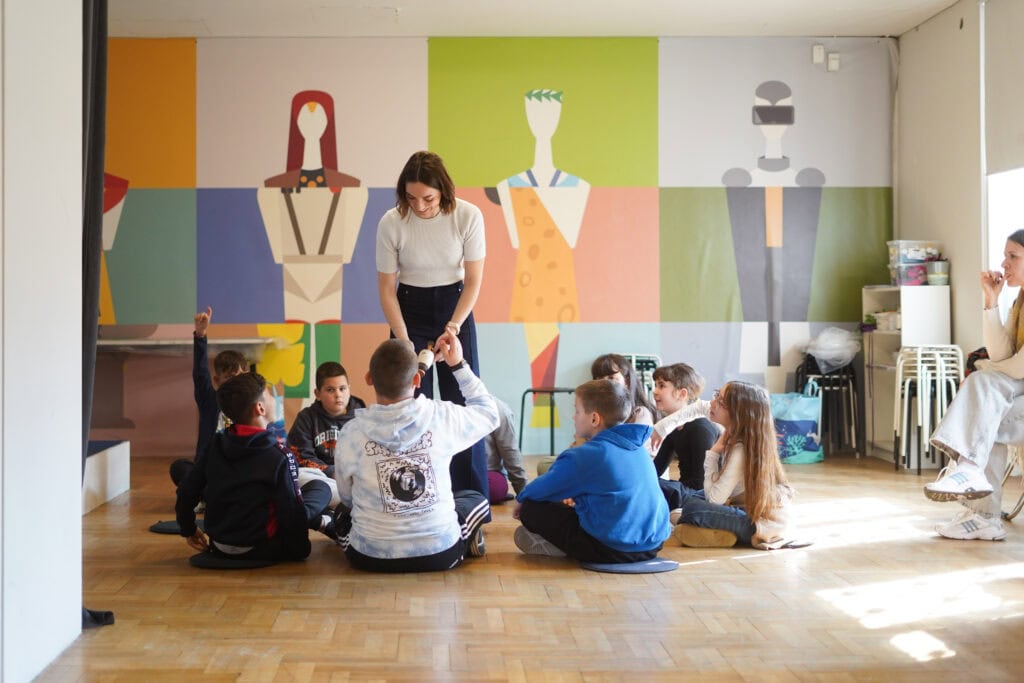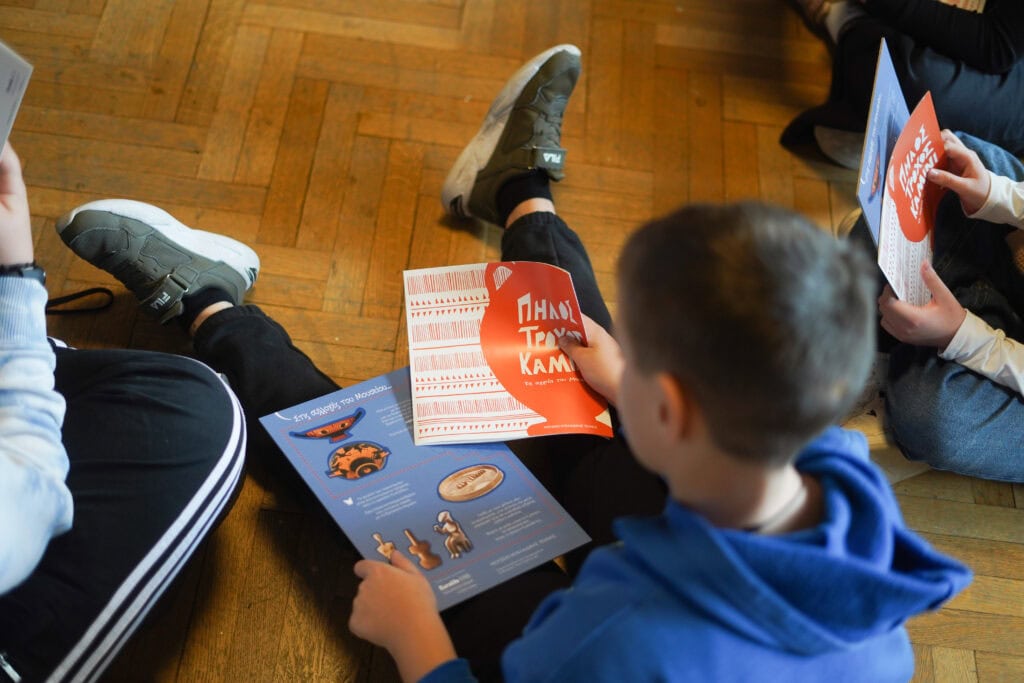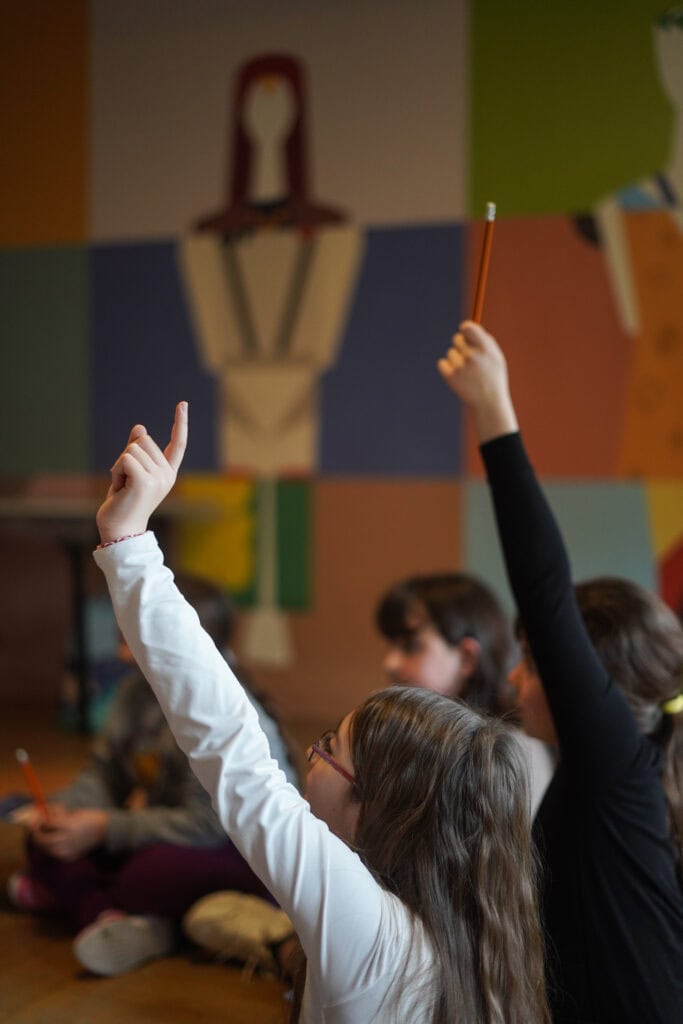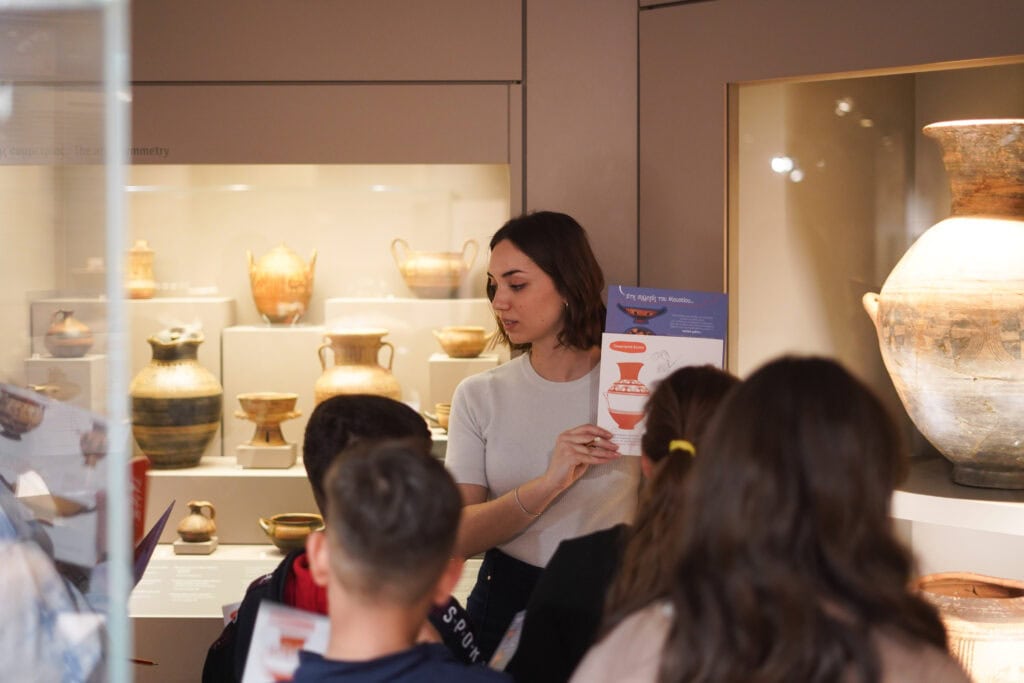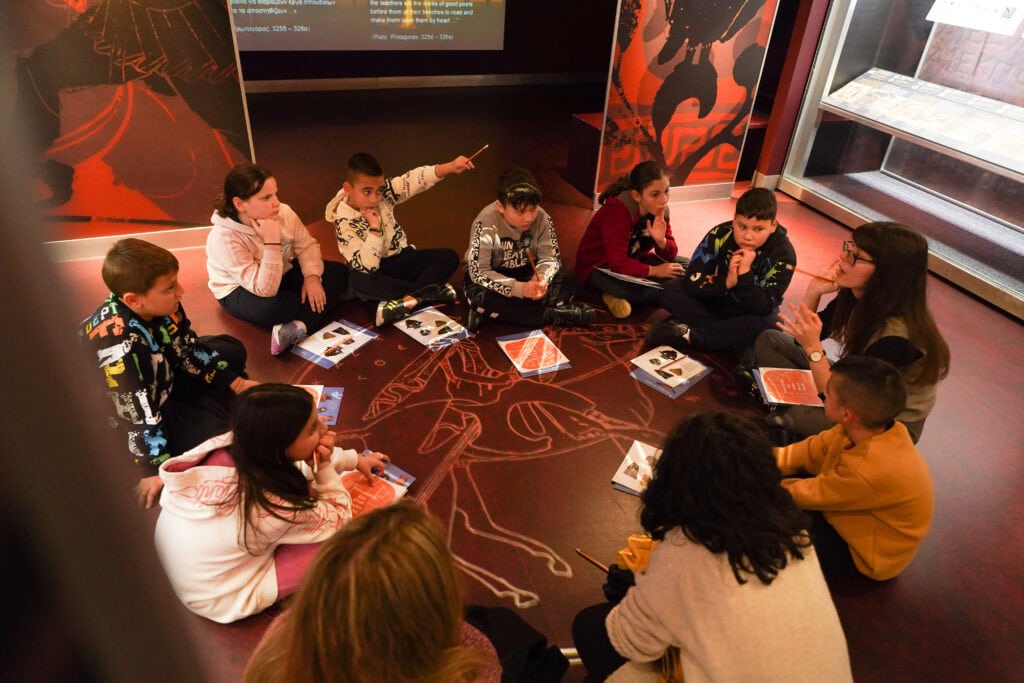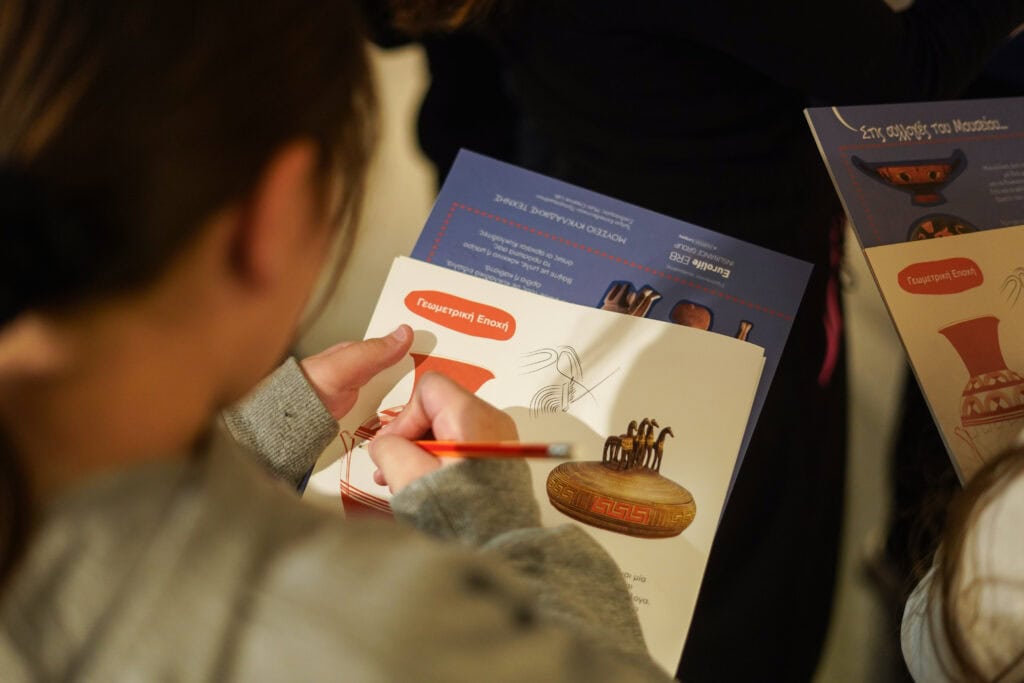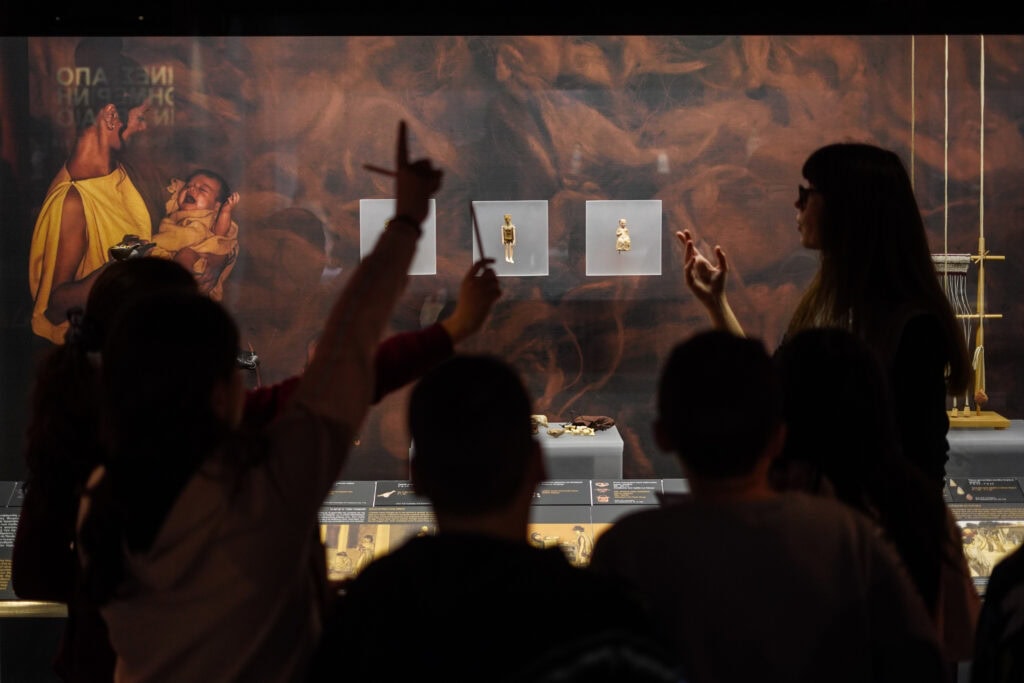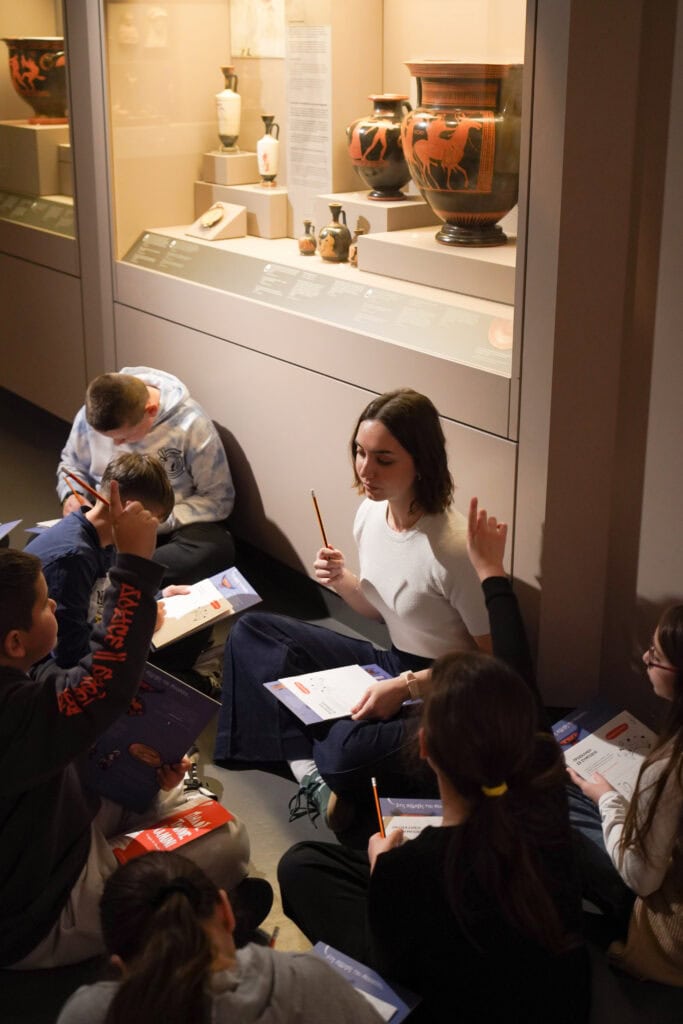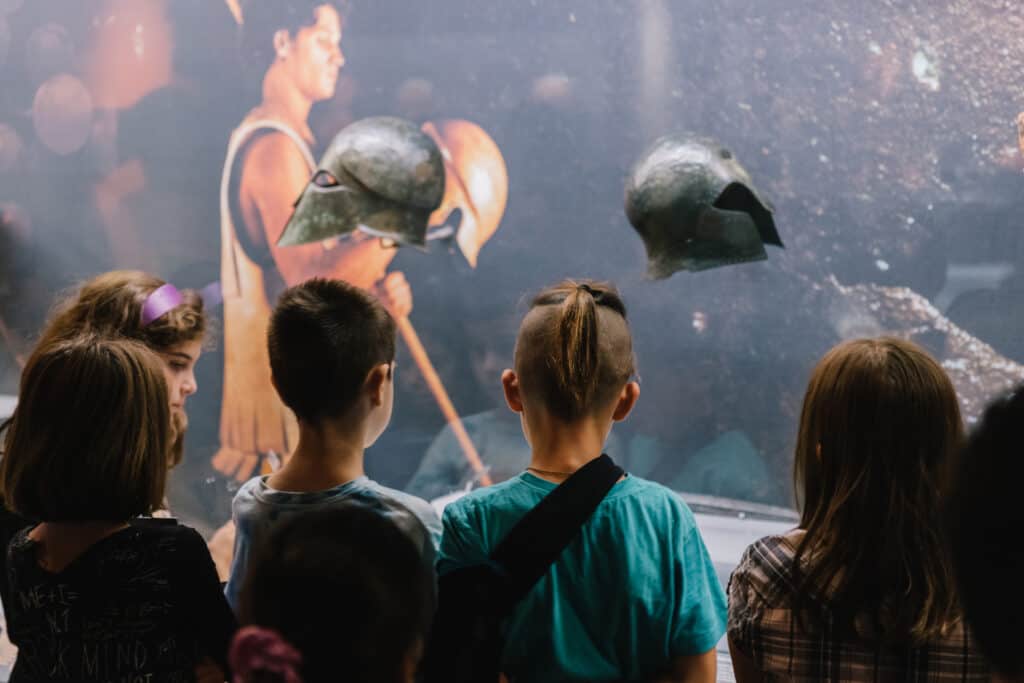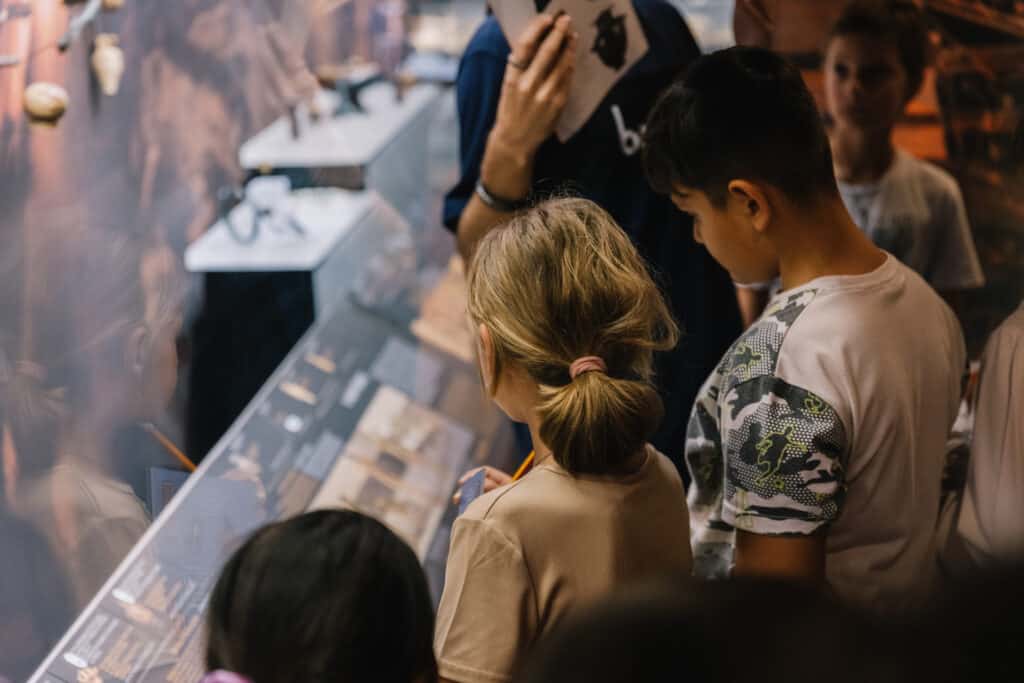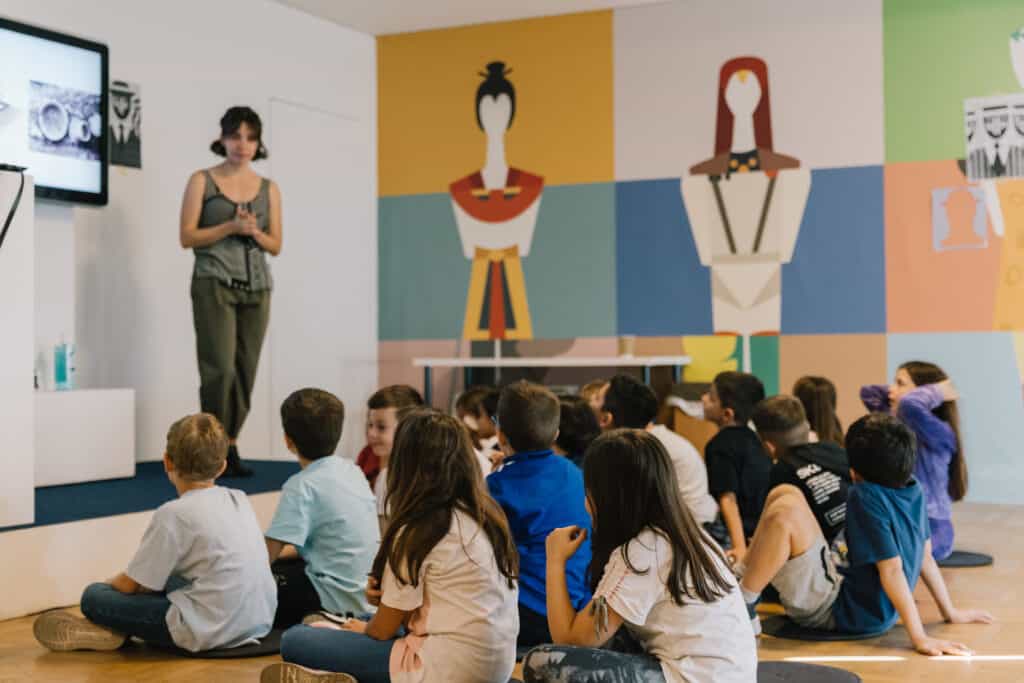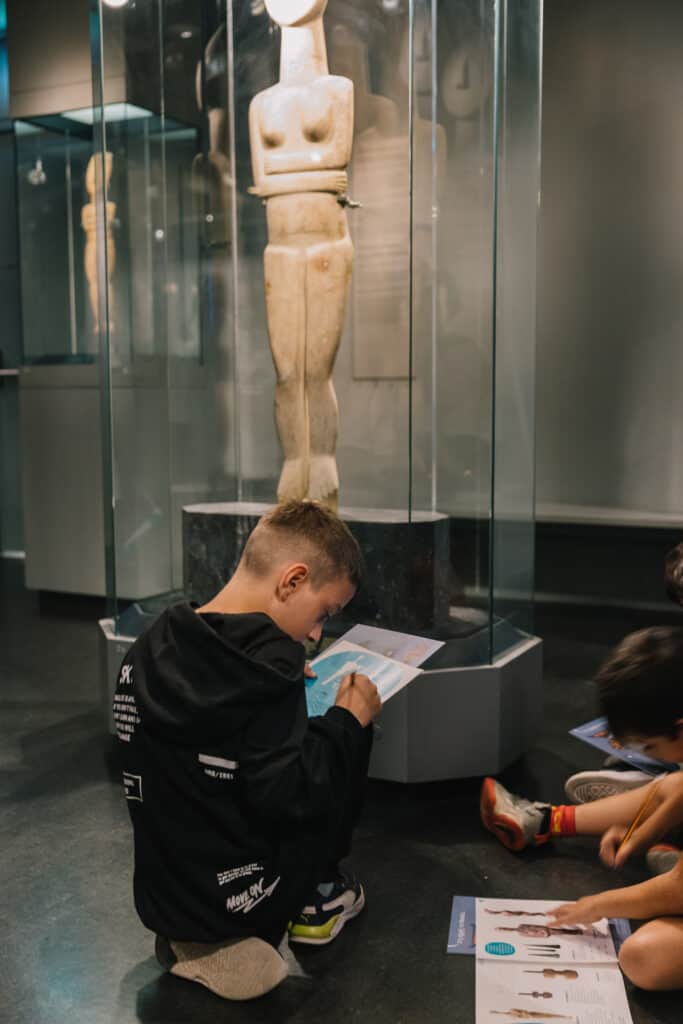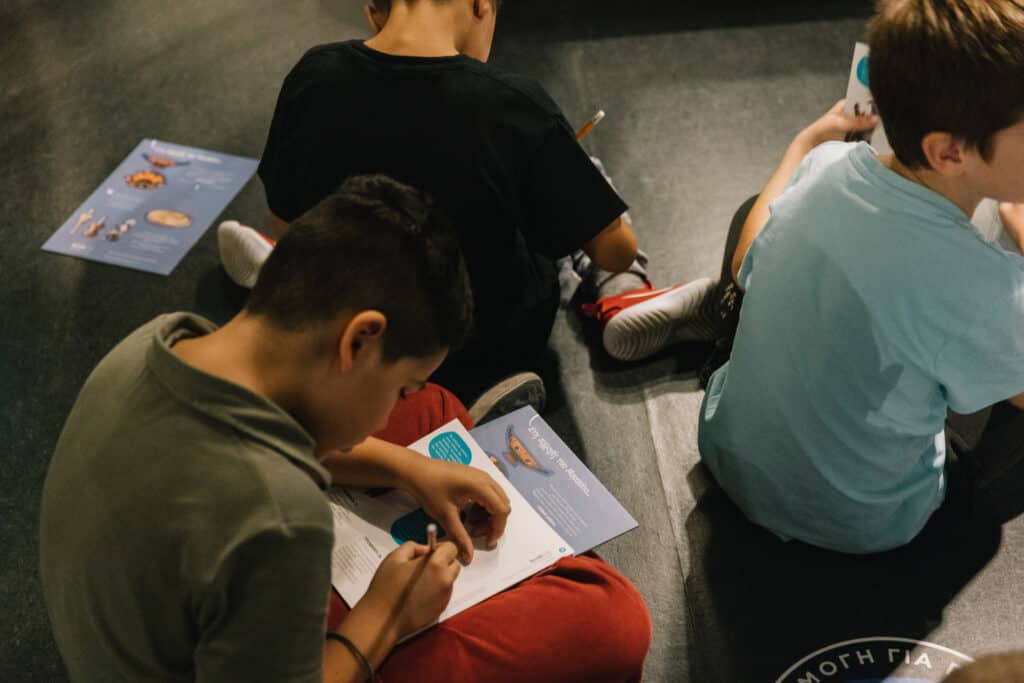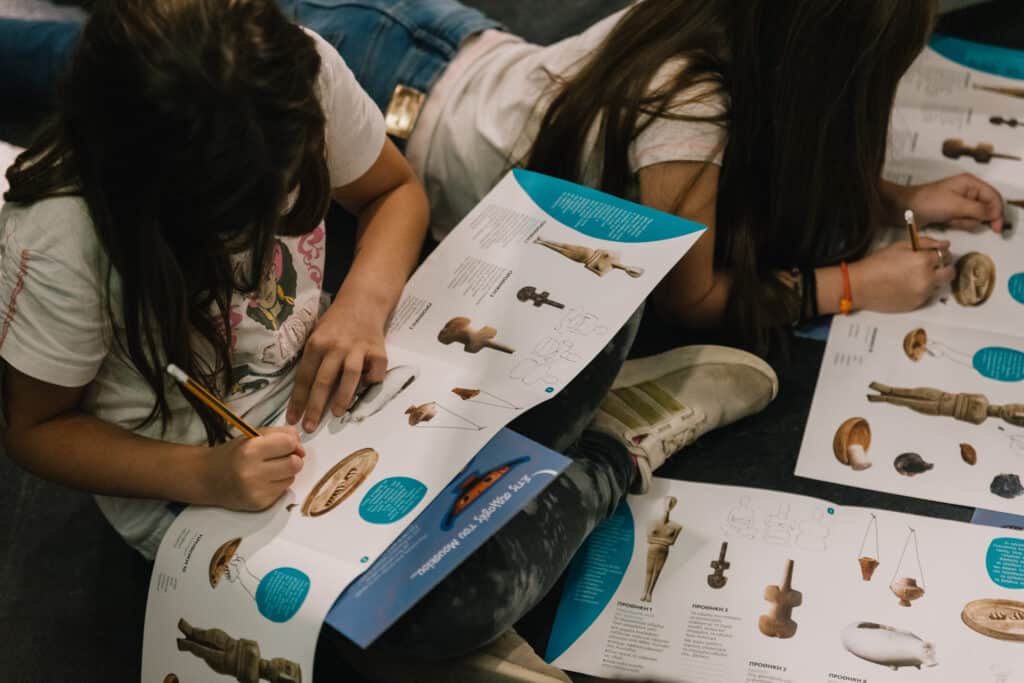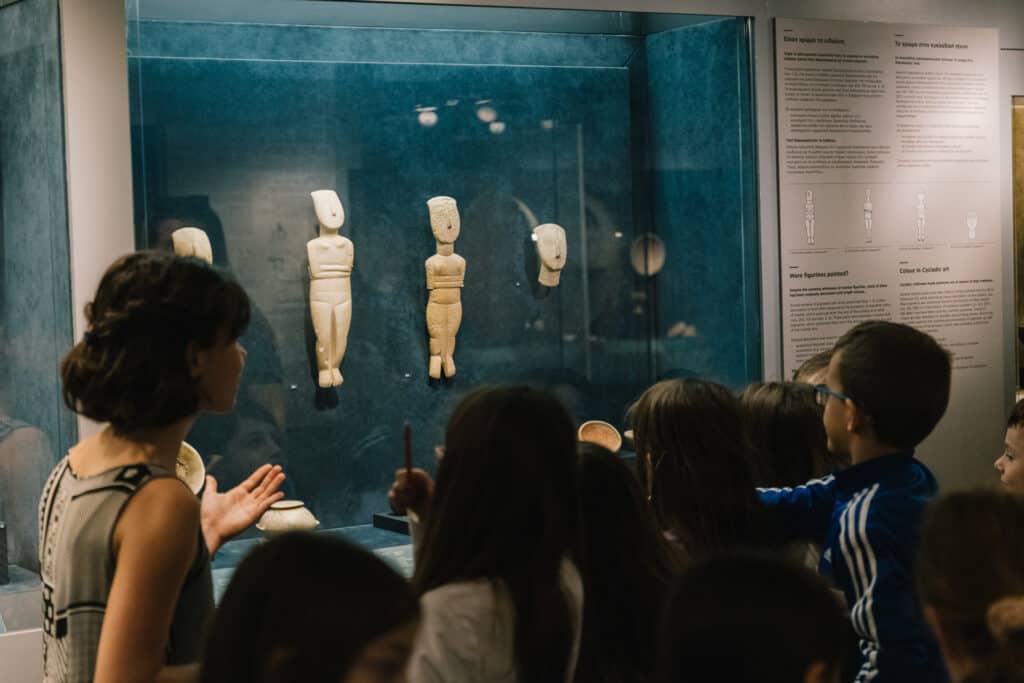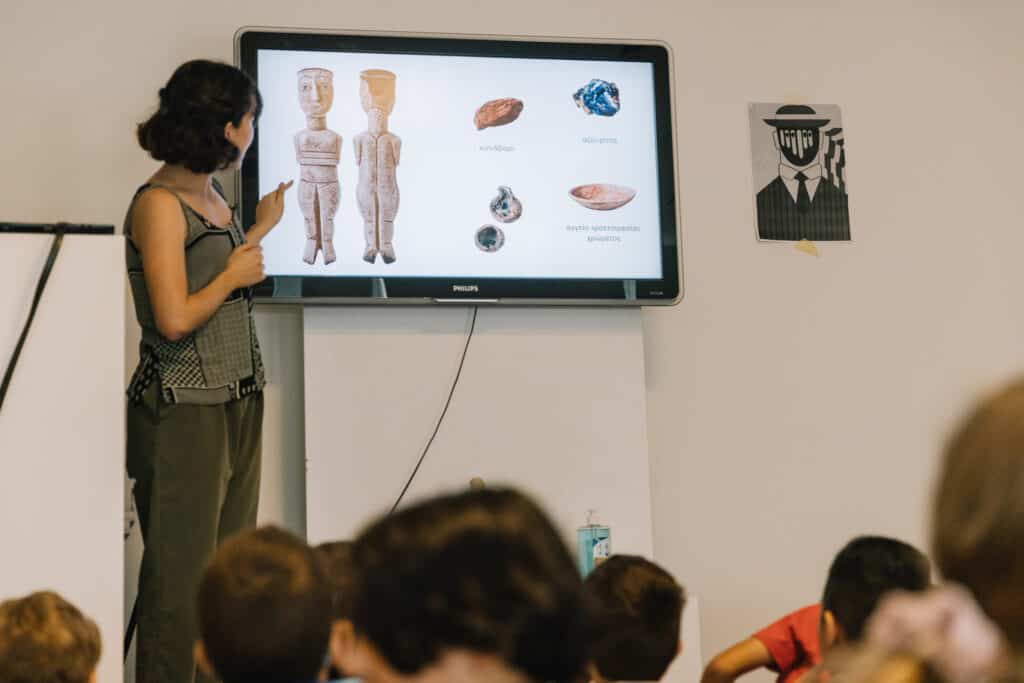Education for all at the Museum
COMMUNITY PROGRAMS
FOR REMOTE & CROSSCULTURAL SCHOOLS
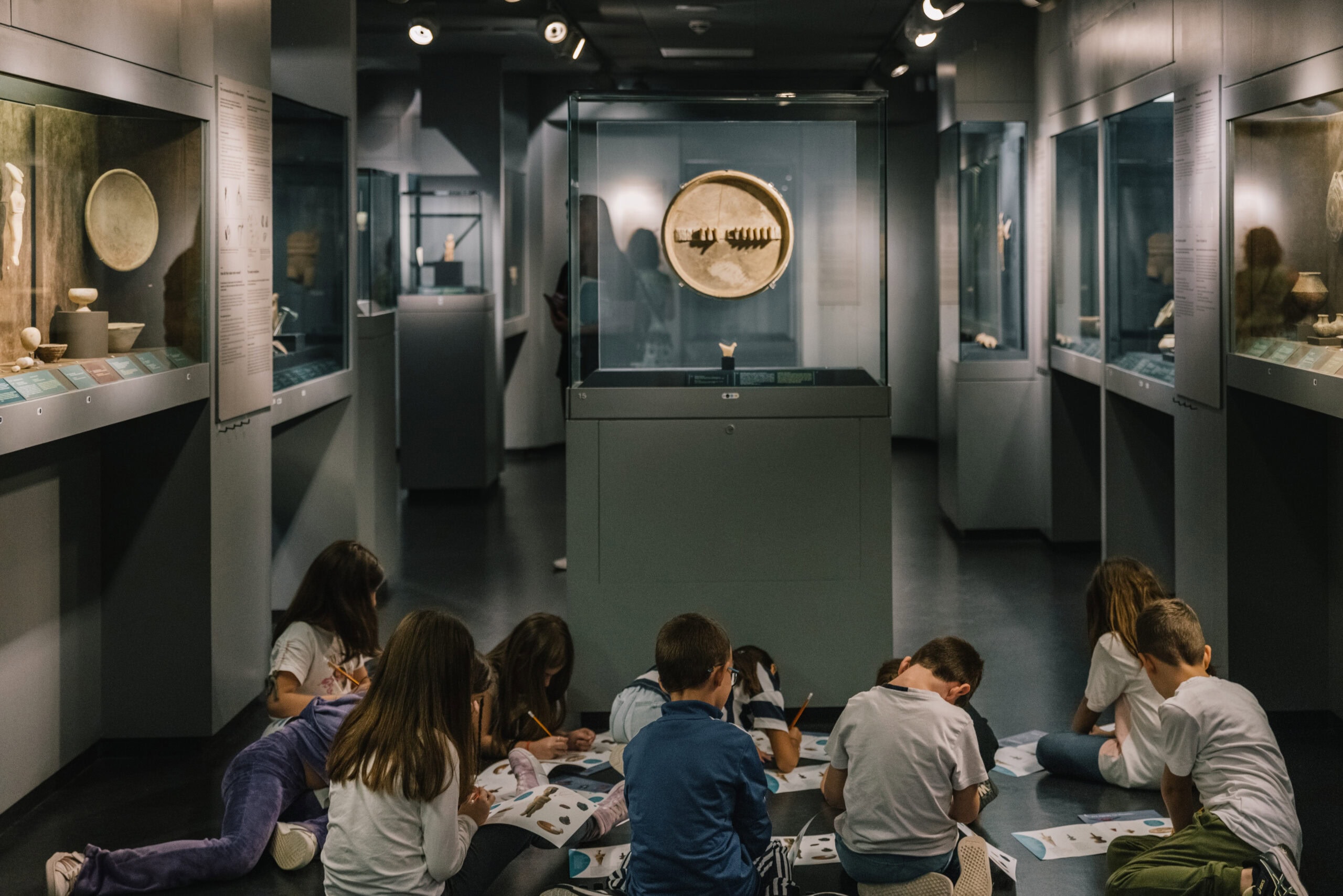
THE PROGRAM
Through weekly, free educational programs, students in 3rd and 4th grades of Primary School and 1st grade of Secondary School can explore the permanent collections of the Museum of Cycladic Art through guided tours. The program also covers transportation to and from their school.
These tours are aligned with the academic curriculum of each grade and are tailored to the specific needs of each age group. The visits aim to introduce children to the ancient Cycladic civilization while also familiarizing them with the world of the Museum and the exhibitions, through an educational, yet entertaining museum experience.
The program began in November 2023, and so far, it is estimated that over 1,500 students from eligible schools have participated. In previous years, emphasis was placed on schools in remote areas, far from the center of Athens, such as Ano Liosia, Aspropyrgos, Villa, as well as schools with students of different nationalities.
The schools are selected in close collaboration with the Ministry of Education and the respective Sub-Directorate of Primary and Secondary Education.
INFO
Duration
Dates
Participation
Maximum number of students
*Accompanying teachers are required to be present
throughout the entire visit.
Venue
Vasilis Sofias & Irodotou 1
